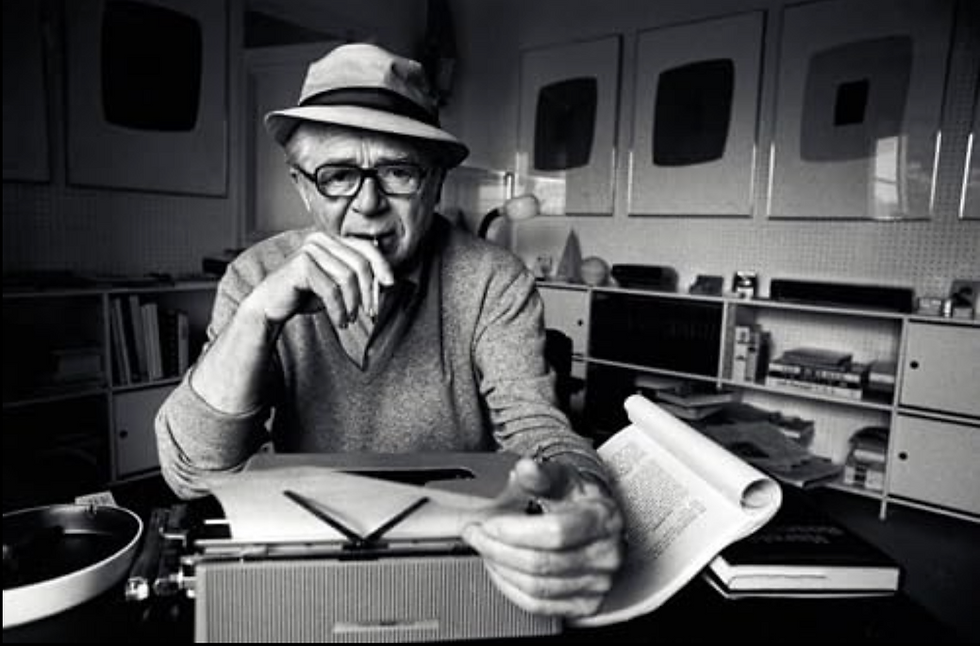Double Indemnity (1944)
- Soames Inscker

- May 27
- 4 min read
Updated: Jun 7

Billy Wilder’s Double Indemnity (1944) is one of the quintessential entries in the film noir canon—a sharp, cynical, and tightly coiled crime thriller that set the standard for visual style, narrative structure, and moral ambiguity. Adapted from the James M. Cain novella by Wilder and the great Raymond Chandler, the film is as much a landmark of screenwriting as it is of noir aesthetics. With pitch-perfect performances, moody lighting, and a haunting sense of fatalism, Double Indemnity remains one of the most influential and enduring American films of the 20th century.
Plot and Structure
At the heart of Double Indemnity is a classic tale of lust, greed, and betrayal. Insurance salesman Walter Neff (Fred MacMurray) becomes entangled with the seductive Phyllis Dietrichson (Barbara Stanwyck), who enlists his help to murder her husband and collect on an accident insurance policy. Neff, who narrates the story via a dying confession into a dictaphone, is both complicit and a pawn, driven by a toxic combination of desire and hubris.
The structure of the film is both innovative and reflective of its noir roots. Told largely in flashback, it opens with Neff stumbling into his office, wounded and near collapse. This framing device—a dead man telling his tale—instantly imbues the film with a sense of doom. The audience knows how it ends; the question is how it unraveled. This technique amplifies the tension and reinforces the themes of inevitability and moral decay.
Performances

Fred MacMurray, best known at the time for genial comedic roles, gives one of the most startlingly effective performances of his career. As Neff, he’s smooth, assured, and increasingly desperate. His transformation from confident pitchman to a haunted man spiraling into paranoia is subtle and compelling.
Barbara Stanwyck, sporting a now-iconic blonde wig, delivers a masterclass in femme fatale performance. Her Phyllis Dietrichson is manipulative, steely, and emotionally impenetrable. Stanwyck never overplays the seduction; her menace lies in her restraint and unreadability. Every glance and half-smile suggests layers of deceit.
Edward G. Robinson, as Barton Keyes, Neff’s astute claims investigator, nearly steals the film. Keyes is sharp, principled, and relentless in his pursuit of the truth, serving as the film’s moral compass. His chemistry with MacMurray is electric—their dialogue crackles with wit and pathos. Keyes’s impassioned speech about the “little man” inside his gut who smells fraud is one of the most memorable moments in the film.
Direction and Visual Style

Billy Wilder’s direction is taut and economical, with every scene propelling the narrative forward. Working with cinematographer John F. Seitz, Wilder employs classic noir visuals: high-contrast lighting, deep shadows, and tight interiors that emphasize the characters’ psychological entrapment. Venetian blinds cast prison-bar shadows across rooms and faces, symbolizing the characters’ moral confinement.
One of the most effective sequences is the murder itself—deftly understated and off-screen. Wilder understood that suggestion could be more chilling than depiction. The camera lingers on Stanwyck’s cold stare as the deed occurs just out of frame, implicating the viewer as an accessory.
Screenplay and Dialogue
Raymond Chandler’s contribution to the script adds a rich layer of hardboiled wit and stylized dialogue. The banter between Neff and Phyllis is laced with innuendo and danger (“There’s a speed limit in this state, Mr. Neff…”). The script is lean and loaded with meaning, its economy enhancing rather than diminishing character complexity.
The tension in Double Indemnity isn’t driven by action, but by psychological and moral pressure. It’s not just about whether Neff and Phyllis will get away with murder—it’s about the slow erosion of Neff’s soul and the tragic realization of his own delusions.
Themes
At its core, Double Indemnity is a meditation on temptation, guilt, and fate. It examines how easily a seemingly ordinary man can be led astray, and how a single lapse in judgment can unravel a life. The insurance industry setting, with its calculations and loopholes, becomes a metaphor for the commodification of death and the cold logic of consequence.
The “double indemnity” clause—paying out double for accidental death—is an elegant symbol of noir irony: the greater the risk, the greater the reward, but also the more inevitable the downfall.
Legacy
Double Indemnity received seven Academy Award nominations, including Best Picture, Director, Actress, and Screenplay, though it lost in all categories. Nevertheless, its critical and cultural stature has only grown. It has been cited by countless filmmakers and scholars as the definitive noir, and its influence can be seen in everything from Body Heat (1981) to the Coen brothers’ The Man Who Wasn’t There (2001).
Its tight script, moral ambiguity, and brooding atmosphere set a template for noir cinema. Moreover, it challenged the Hollywood system's expectations of protagonists, daring to make its lead not a hero, but a deeply flawed everyman consumed by passion and regret.
Conclusion
Double Indemnity is a masterwork of American cinema—suspenseful, smart, and uncompromising. It bridges the gap between classical Hollywood storytelling and modern psychological realism. Wilder, Chandler, and Cain formed a dark trinity of talent that produced a film as cynical as it is captivating. Even after 80 years, its shadows have not dimmed. The film endures not just because of its stylistic brilliance, but because it taps into something timeless: the darkness that lies just beneath the surface of ordinary lives.
Essential viewing for any serious film lover. A noir masterpiece that set the standard—and still beats most of its imitators.





